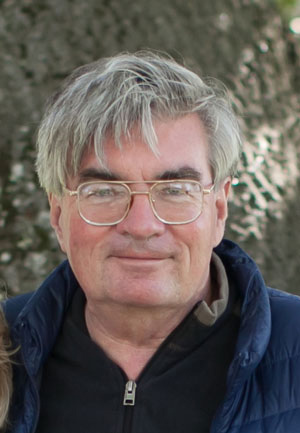A Short History of Sachs
Part 1: Racer Ernst Sachs begins making bearings and hubs in 1895
by John Neugent
Tech articles | Commentary articles |
Sachs History part 2: Sedis chains
The late John Neugent probably knew more about bicycle wheels than anyone else. Maybe more about bikes as well. He spent his life in the bike business, at every level. He owned Neugent Cycling, a firm devoted to delivering world-class equipment at the lowest possible price. —Chairman Bill

Author John Neugent
Sachs. Most bike people probably don’t know the name. Sachs' bicycle division was bought by SRAM in the mid 90s, about 10 years (1989) after I became head of Sachs Bicycle Components—USA. When I took the job I also had little idea that Sachs was a powerhouse in Europe. Primarily with internally geared hubs—called gear hubs by the Europeans.
When I had a shop in the 70s there were still quite a few Sturmey Archer 3-speed hubs, and I even built up a few bikes for myself with gear hubs. They were heavy, inefficient, and offered few gear options, but they were durable, which mattered in the harsh New England winters.
In the years before I signed on as the new US president, Sachs had bought Maillard, Huret, Sedis, and was soon to buy Modolo. Older folks probably remember those brands. Maillard-made hubs (most often sold under their "Normandy" brand) and Huret derailleurs were very much the standard 10-speed components of the early 70s largely because they were on most of the Schwinn bikes with “Schwinn approved” markings.
I got to know the sons of the founders of many of those companies. Some fairly well. But this is the first article in a series. I don’t know what I will write about the later years of Sachs, but the early years are just as interesting.
Ernst Sachs raced bikes in the late 1800s—not long after the invention of the bicycle, on a “penny farthing” or high-wheeler.

Ernst Sachs with a high-performance bike of the time
The Sachs company, originally named Fichtel & Sachs, was founded in 1895 by Ernst Sachs and Karl Fichtel in Schweinfurt, Germany, to produce ball bearings and bicycle hubs.

Sachs (then Fichtel & Sachs) celebrated it's 25th anniversary in 1920.
Schweinfurt became a major bearing maker and was therefore almost leveled in WW2 by allied bombers. 80% of more of the buildings were destroyed. Sachs then went on to develop motorcycles, bicycles, and automotive parts. Many of the top German cars like BMW, Mercedes, Audi rely on Sachs components.

Sachs ball bearings
The bike Ernst Sachs raced on was a high-wheeler with a journal, or plain bearing. No ball bearings, just a lubricated shaft rotating in a hole. Surprisingly, journal bearings are still in use. One can only imagine the performance difference when he went to ball bearings. Sachs quickly became a maker of Torpedo Hubs which where single-speed freewheeling hubs, capturing most of the European Market.

Original drawing of the Sachs Torpedo hub with Ernst Sachs' handwritten notes
They also introduced the Duomatic, a two-speed kick-back hub.
While I was with Sachs—pre 1997—the company had already spent years working on electronic shifting, disc brakes, and many other technologies. Their automotive division was far larger than their bicycle division and an excellent engineering staff.
Gunter Sachs, the son of the sole owner, became a well-known playboy and married Brigitte Bardot.
In the next article I will go into the French factories brought on board to complete derailleur groups, quickly becoming the norm for derailleur components in the mid-1980s.
John Neugent was was one of the first to establish quality hand building in Taiwan around the turn of the century. He now owns Neugent Cycling, a firm devoted to delivering world-class equipment at the lowest possible price.








